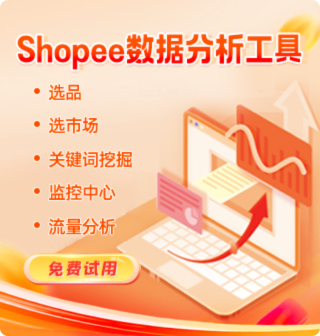-
用户188****7845
Shopee Entry Conditions and Fees: A Detailed Guide for Sellers
Shopee has rapidly become one of the top e-commerce platforms in Southeast Asia, attracting millions of buyers and sellers. For merchants looking to expand their online presence, understanding Shopee’s entry requirements and fee structure is crucial to making informed decisions and maximizing profitability.
This article provides an in-depth look at Shopee’s seller entry conditions, the various fees involved, and practical tips to help new sellers navigate the platform effectively.
1. Shopee Seller Entry Conditions
Before selling on Shopee, merchants must meet certain basic requirements and complete the registration process. Requirements can vary slightly depending on the country, but generally include the following:
a) Basic Seller Requirements
- Valid Identification: Sellers need to provide government-issued identification such as a passport, national ID, or business registration certificate.
- Bank Account: A local bank account is required to receive payouts from Shopee.
- Contact Information: A valid phone number and email address to handle communication and verification.
- Business Legitimacy: Depending on the product category, official business licenses or permits may be necessary.
- Product Compliance: Sellers must ensure products comply with local laws, especially for regulated categories like cosmetics, food, health supplements, and electronics.
b) Registration Process
- Visit the Shopee Seller Centre website or download the Shopee Seller app.
- Register by providing personal and business information.
- Submit required verification documents.
- Once approved, sellers can start listing products.
c) Product Listing Policies
Shopee maintains strict policies on prohibited and restricted items. Sellers should review Shopee’s product guidelines to avoid listing banned products such as counterfeit goods, illegal items, or unsafe products.
2. Shopee Fee Structure for Sellers
Shopee operates primarily on a commission-based model, supplemented by advertising and optional service fees. Understanding these fees helps sellers price their products competitively while maintaining profitability.
a) Commission Fees
- Shopee charges a commission fee on each successful sale.
- The commission rate varies by country and product category but generally ranges between 1% to 5%.
- For some categories (like digital goods or certain services), commission rates may differ.
- Commissions are deducted automatically from seller payouts.
b) Transaction Fees
- Depending on the payment method, some markets impose a small transaction or payment gateway fee.
- Shopee often absorbs these costs as part of promotions, but sellers should verify for specific countries.
c) Advertising Fees (Shopee Ads)
- Shopee offers in-platform advertising options such as keyword ads and product spotlight ads.
- These are optional and operate on a pay-per-click (PPC) basis.
- Advertising budgets are entirely controlled by sellers, allowing flexibility.
- Investing in Shopee Ads can significantly increase product visibility and sales volume.
d) Logistics Fees
- While Shopee often negotiates discounted rates with logistics partners, the shipping cost typically falls on either the seller or buyer, depending on the arrangement.
- Some campaigns offer free shipping subsidies, but sellers should factor in logistics costs when pricing.
e) Value-Added Services (Optional)
- Shopee provides services like professional photography, warehousing, and fulfillment support.
- These services incur additional fees but can help sellers improve sales performance and operational efficiency.
3. Additional Important Considerations
a) Fee Waivers and Promotions
- Shopee frequently runs promotions for new sellers, which may include waived commission fees for an introductory period.
- Sellers should actively monitor Shopee announcements to take advantage of such offers, reducing initial costs.
b) Impact of Fees on Pricing Strategy
- Sellers must factor in all applicable fees when setting product prices to ensure profitability.
- Competitive pricing combined with good margins can lead to better visibility in Shopee’s search ranking algorithms.
c) Cross-Border Selling Fees
- For sellers participating in Shopee’s cross-border programs, additional fees such as customs duties and international logistics may apply.
- It is essential to understand the total landed cost to avoid unexpected expenses.
d) Seller Performance and Fee Adjustments
- Shopee occasionally adjusts commission rates or fees based on seller performance, category competitiveness, or market conditions.
- Maintaining high ratings, low cancellation rates, and good customer service can sometimes qualify sellers for fee discounts or participation in premium programs.
4. Practical Tips for New Shopee Sellers
Start Small: Begin with a manageable number of SKUs to test the platform and understand fee impacts.
Utilize Seller Education: Shopee offers tutorials and webinars on fee management and optimizing listings—take advantage of these resources.
Monitor Expenses: Use Shopee’s Seller Centre tools to track fees deducted and analyze profitability per product.
Leverage Free Promotions: Participate in Shopee campaigns that offer fee reductions or free shipping to attract buyers.
Negotiate Logistics: Where possible, negotiate better shipping rates with logistics partners or bundle shipping costs into product prices.
Conclusion
Entering Shopee as a seller is straightforward but requires careful attention to the platform’s entry conditions and fee structure. By understanding the commission fees, optional advertising costs, and other expenses involved, sellers can develop effective pricing and marketing strategies to thrive on Shopee.
With proper preparation and strategic use of Shopee’s tools and promotions, sellers can minimize costs, increase sales, and build a sustainable online business within one of Southeast Asia’s fastest-growing e-commerce ecosystems.

